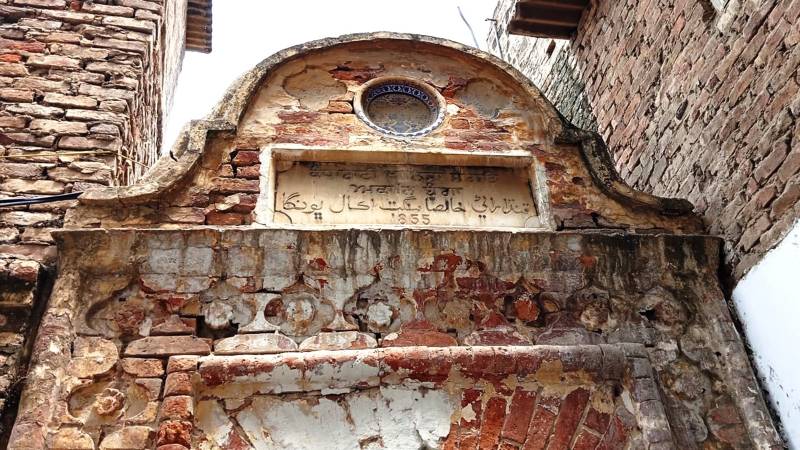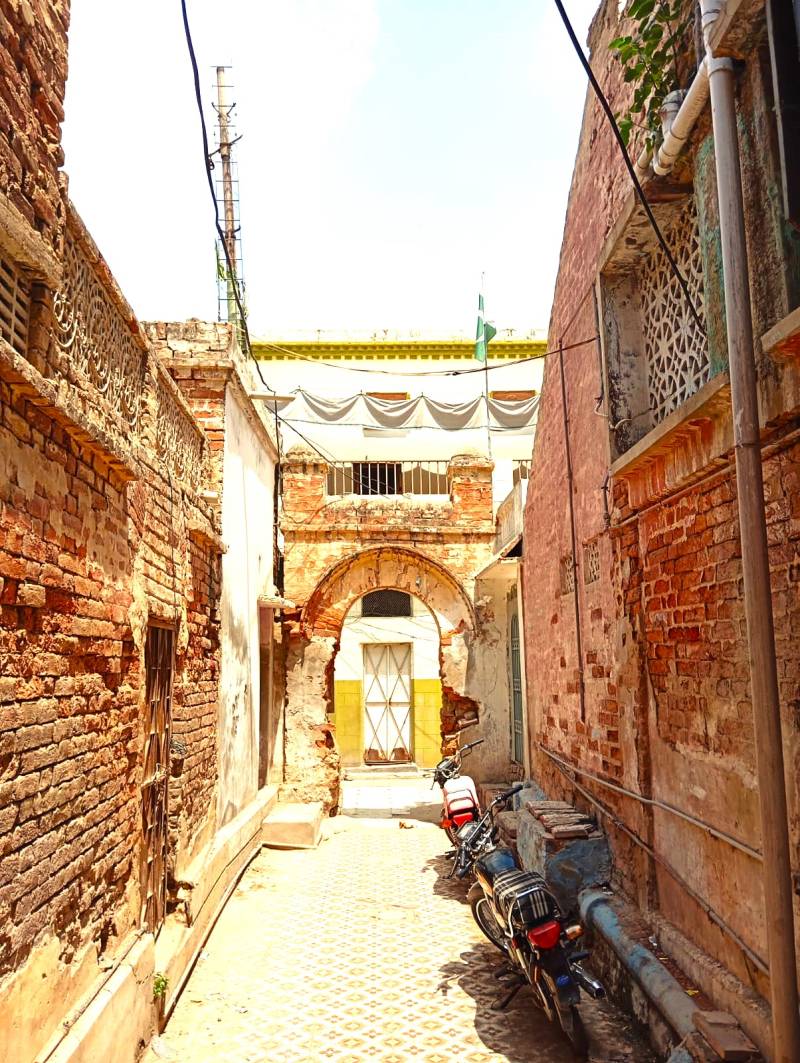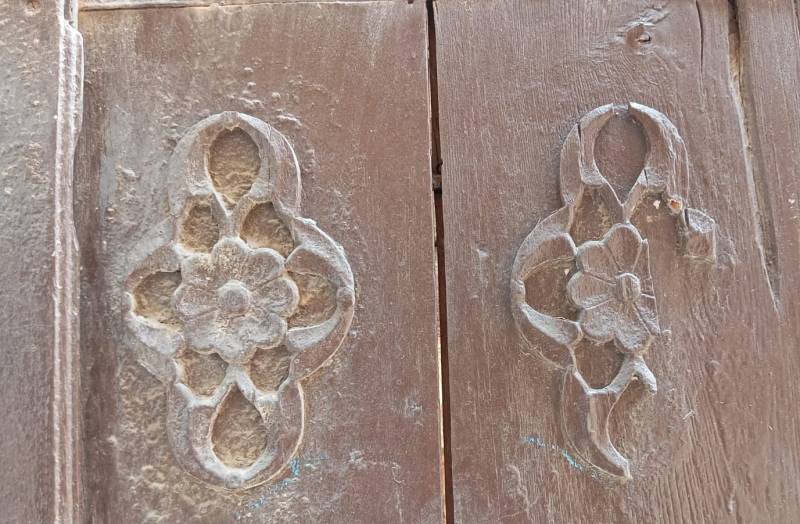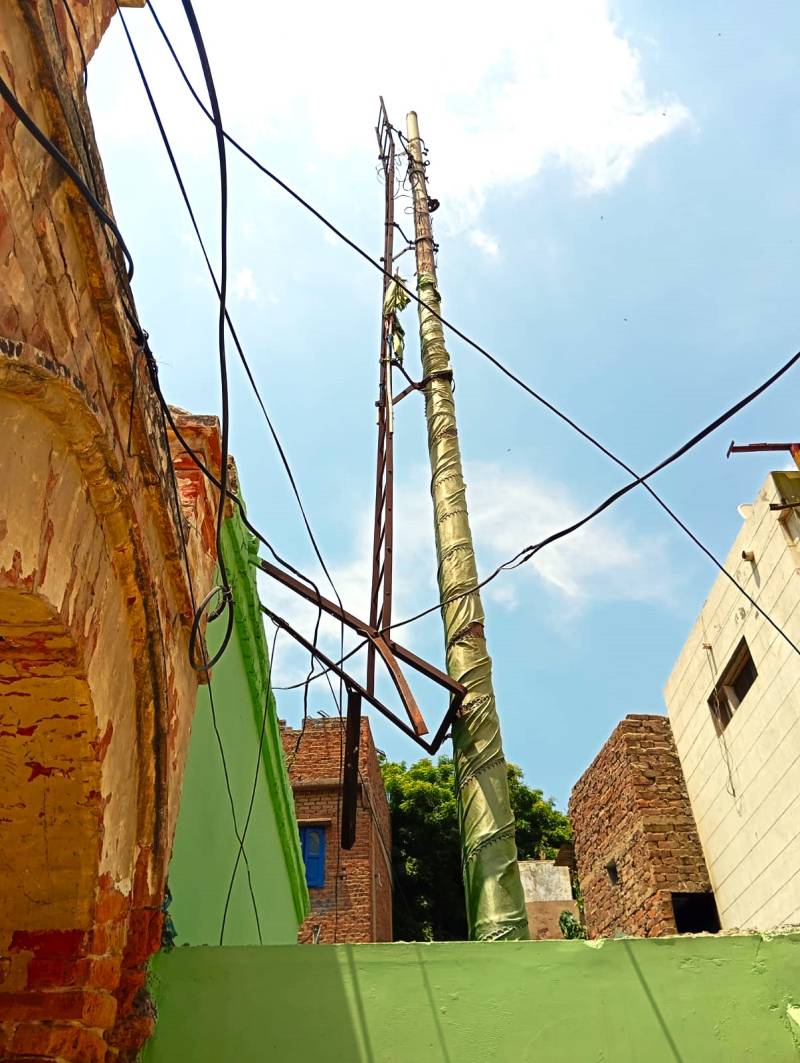
In 2019, I wrote about Qandharani Khalsa Sangat Akal Bhunga. Yesterday, roughly five years later, I revisited it. I took Faujdari Road, reached the old Abbasi Hospital (nowadays, a new building has been erected in its place). I was a bit confused, thinking I had taken the wrong route! I asked an old man about the location of Qandharani Akal Bunga, but he was too engaged in pressing sugarcane through an electrically operated presser and did not respond to me. I thought that perhaps he had not properly heard my question. Therefore, I repeated it: “Where is Qandharani Akal Bhungo?” He raised his head, looked at me, and uttered just a brief sentence, "Go to Sikh Paro." (Go to Sikh’s lane). It was a new name for the directed location. I nodded my head: I had understood his reply. But rather than understand, I had become more puzzled.
I left him, but before I disappeared from his eyes, he directed me toward a street on the right side (I was heading towards the old Koh-e-Noor Cinema/Bhai Khan Charrhi). I entered the street and asked the shopkeeper, who was selling some parts of solar panels, “Is this Sikh Paro?” He, without taking his head, replied: "No, it is Akal Bhunga lane." I smiled and relaxed, realizing I was at the right place.
I looked to the right hand and found myself in front of the gate of Akal Bhungo. The plaque of the gate’s arch read: “Qandharani Khalsa Sangat Akal Bhunga, 1855.” The lane was too dirty. The left-side pillar was dumped with waste, and even its plinth was covered with dirt and piles of vegetables, children's diapers, and discarded items of health and hygiene. I took some photos and enquired about the person who could help me to learn about the courtyard and rooms of the Bhunga. I saw a child at the door and asked him to call an elder from the premises/compound. The child obliged and went inside. I waited, and soon a young man came. He warmly greeted me and introduced himself as Faisal Shaikh, adding that his family, along with other allottees, lived in the compound. He told me it was allotted by the Rehabilitation Department.

Faisal said that nine families are living inside the compound, and they have been living there since the partition of 1947. Regarding the original structure or remains of the Bhunga, he pointed to the two gates, adding that only these gates remain as a sign of the Bhunga, but all other inner structures have been altered - the worship hall converted into small rooms and each family has constructed baths and toilets according to their needs and convenience.
I noticed another man in the distance was keenly observing our conversation. He was in his mid-60s. Finally, he came and introduced himself as Muhammad Ali. He also confirmed Faisal’s statement that old hall, rooms, and guest rooms have been altered by the residents, and even the books of the library were thrown and burned. I asked him as to what the reason was for the destruction of the library. He told me that perhaps our elders were unable to read those books or were in the fervour of Islam, and they considered all languages other than Arabic and Urdu as languages of the Kafirs (non-believers). Faisal added that perhaps the books were written in Sindhi, Gurmukhi, or Hindi, and all these languages were seen as those of non-Muslims by Muslim ideologues, and even workers of the Muslim league in those days thought in that way, he added.

Muhammad Ali left us in the midst of the discussion. Then we moved to the topic of fixtures of the Bhunga. Faisal continued that some of the residents in this compound even pulled and sold the windows, iron grills, and doors. His words pushed me to recall the short story authored by Ain Qaf Shaikh titled, “Hyderabad-December-1947,” where he depicted scenes of Shahi Bazar, Hyderabad, and showed how migrants took and sold the household items of Sindhi Hindus who had hurriedly left their homes. The story categorically mentions these household items – cupboards, beds and other pieces of furniture.
Is it the fate of Hyderabad to be ugly and remain so? I couldn’t figure out. But I have felt that that the inhabitants of the city are proceeding at full speed to damage and destroy their city’s cultural heritage and historical features
Faisal and I headed towards the corridor that connects the main gate and inner gate of the then Bhunga. Now, Faisal and I were in front of the inner gate. I looked at the antique wooden gate of the Bhunga, and then Faisal asked me, “What should be the price of the gate in the antique market?” Before I could say something, he told me that someone from Tando Muhammad had offered Rs. 250,000/- for this gate. Surprisingly, I said, “Really!” He went on to share how antique purchasers’ gangs operate nowadays. According to him, there are two gangs from Karachi and Lahore. I interrupted him, “What do these gangs do?” He told me that they are very active in purchasing old-designed tiles, colonial-styled grills, decorated roof bricks, and designed plaques affixed into pillars and walls of the houses. He added that these groups have local agents, and these agents are active in the whole of old Hyderabad. However, according to him, the groups in Hirabad and Shahi Bazar are the strongest, well-connected, and rich: they are supported by local politicians, the police, and even criminals are their companions. He told me that nowadays, Hirabad’s material - double-hung windows, beds, cradles, cupboards, tables, rocking chairs and stools - is nearly exhausted.
I stopped him and directed his attention to a long-affixed wooden pole in the courtyard of the then Qandharani Khalsa Sangat Akal Bhunga. Suddenly, he became silent, but then took my hand and crossed a few houses, and now we were in front of the wooden pole.
In fact, in Sikh religious terminology, such type of poles are called a Nishan Sahib – a pole with a spearhead-like ornament affixed at the top of a Gurdwara/ or nay worship structure. According to Sikh tradition, the Nishan Sahib is an important symbol of Sikh identity. Again, I asked him how this wooden pole has remained intact and not been uprooted and sold. He told me an interesting story that once an inhabitant of the compound attempted to dismantle the pole, but then and there he became sick. Again, he tried, but went through the same distress and ailment. Gradually, most of the people in the compound became ill, and the elders went to a Pir (spiritual guide). He told them that the wooden pole seems a holy thing and suggested that they should refrain from it and colour it green. Afterward, they treated it as sacred, constructed a wall around it, and the space remains locked, the wooden pole has been wrapped in a green cloth, and the wall of the small protected structure has been painted green. Now, they are safe, and no one has fallen ill.
Near the second gate inside the compound, there was a simple arch, and I saw a plaque affixed into the ground. I asked a nearby young man to bring a bucket of water, and he brought it. I washed the plaque, tried to read the names of the person(s) who had humbly written their names on the steps of Akal Bhunga, but I failed to read the names. Now, I noticed that people had gathered, and I heard one person say that I was an official there to survey possible damages in the area due to current rain. I thought it was the right time to flee.

I thanked Faisal and backtracked along the same Faujdari Road. The crumbling bricks and disrepair gates were indications that soon, these last signs (the two arch-gates and wooden door) of the historical Qandharani Khalsa Sangat Akal Bhunga will be eroded. But the most disheartening aspect was the operations of gangs that encourage the inhabitants to detach and unhook architectural reclamations such as doors, windows, unique furniture, décor and other home accessories. This situation reminds me of the early days of the employees of the East India Company, who plundered antique items from India. Surely, the case of Hyderabad is considerably different from the looting of Indian antiques and valuable items, but it has some similarities - greed, pulling out valued items from rooms, verandahs, and courtyards, and leaving behind structures of less value or ugliness.
Is it the fate of Hyderabad to be ugly and remain so? I couldn’t figure out. But I have felt that that the inhabitants of the city are proceeding at full speed to damage and destroy their city’s cultural heritage and historical features. Obviously, in the near future, it will lose its identity.
I crossed the same person who had directed me towards “Sikhan Jo Paro” (Neighbourhood of Sikhs). When I was about to cross him, he saw me and asked, “Have you found it?” I said, ‘Yes’. Simultaneously, the dilapidated gates of the Qandharani Khalsa Sangat Akal Bhungo emerged before my eyes, and the name of Bhai Gola Singh echoed in my ears. He belonged to a wealthy family of Hyderabad, but he denounced all material status and gains. He became a devotee and a regular visitor of Qandharani Khalsa Sangat Akal Bhungo until 1866, until he constructed the Bhunga in his lane. I thought about him - if somehow he were to return and come to Hyderabad and see the state of Qandharani Khalsa Sangat Akal Bhungo and the dilapidated city.
What would his reaction be? None knows, perhaps he might think he has landed in an abandoned city of an unknown planet, or he might just look around and faint - who knows!

